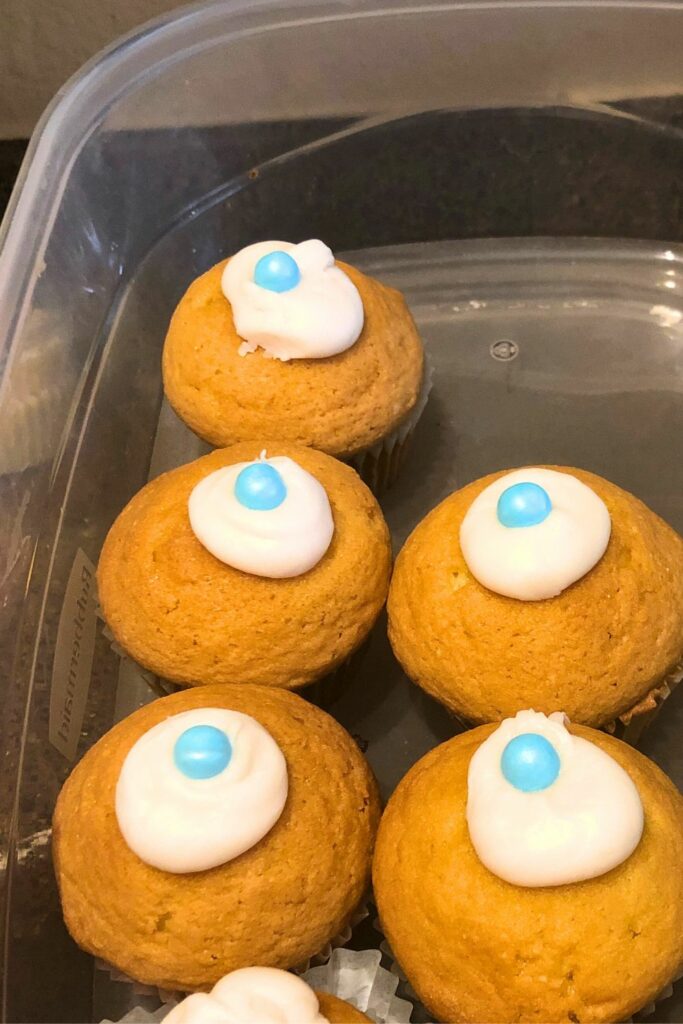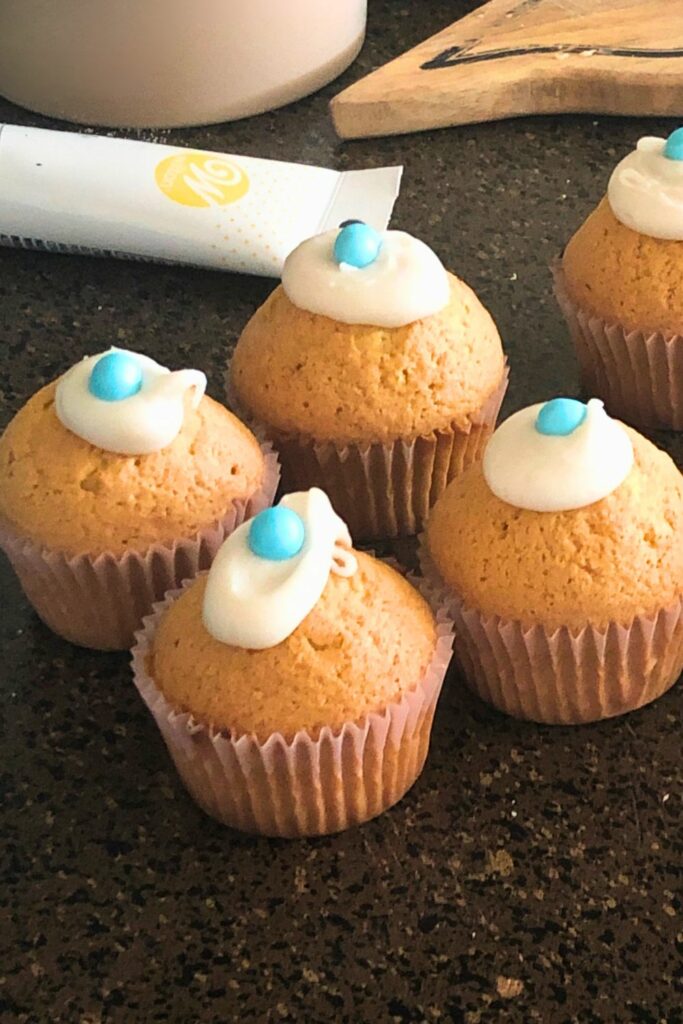Whenever I hear “Fairy Cakes,” I instantly travel back to a quaint kitchen in the English countryside, brimming with the warm, sweet aroma of freshly baked cakes. During a summer visit to my Aunt Rose’s cottage, I discovered these delightful treats. Aunt Rose, a sprightly woman skilled in storytelling, regaled us with tales of her youth while we savored her famous cakes, each bite a burst of bliss.
She explained how fairy cakes were integral to family gatherings and neighborhood tea parties. I recall sitting at her old oak table, sunlight streaming through lace curtains, as she shared her secret recipe, a treasured piece of family history passed down through generations.
Years later, in my own kitchen, I recreate those fairy cakes. Mixing the batter reminds me of the laughter and love that filled Aunt Rose’s kitchen. These cakes are more than treats; they are reminders of simpler times, childhood wonder, and the magic in the smallest things.
In this blog post, we’ll explore the world of fairy cakes. Covering their history, cultural significance, and a step-by-step baking guide, this comprehensive guide caters to baking enthusiasts and novices alike. Join me on this sweet journey into the enchanting world of fairy cakes.
What sets a Cupcake apart from a Fairy Cake?
Click here to get printable version
Fairy cakes and their American cousin, the cupcake, often get mistaken for one another, yet they possess distinct identities and charms. Despite sharing similarities, several key differences distinguish fairy cakes.
Size and Proportions
Fairy cakes stand out primarily in their size. They are traditionally smaller than cupcakes, reflecting their purpose as dainty treats ideal for children’s parties or as a light snack. In contrast, cupcakes, baked in larger cases, have gained popularity as a substantial sweet offering, frequently served in cafes and bakeries around the world.
Toppings and Presentation
The approach to toppings further highlights the differences. Cupcakes feature lavish frosting, often with generous amounts of buttercream or cream cheese icing. Fairy cakes, on the other hand, usually sport simpler toppings, like a light icing sugar drizzle or delicate sprinkles. This choice impacts not just the taste and texture, but the cakes’ overall look as well.
In Britain, the traditional presentation of fairy cakes involves slicing the top off, adding a dollop of jam, and then repositioning the sliced top to mimic fairy wings. This unique style not only names the fairy cake but also contributes to its playful appearance.
Flavors and Ingredients
While both cakes might use similar base ingredients, their composition and flavors differ. Fairy cakes typically follow a simple Victoria sponge recipe, creating a light, airy texture. Cupcakes, however, have diversified, incorporating a wide array of flavors and ingredients from rich chocolate to exotic prosecco, offering a broader spectrum of taste experiences.
Why Do We Call Them Fairy Cakes?
The term “Fairy Cake” comes from the cake’s small size and delicate appearance, evoking the whimsy and magic often linked to fairies. These charming, petite treats perfectly fit children’s parties, where their few-bite size adds a magical touch to the event. This article section explores the cultural and historical context of the fairy cake, shedding light on why its name aptly reflects its enchanting characteristics.
Fairy Cakes and American English
In the context of British baking culture, fairy cakes hold a special place, but their recognition and terminology differ in the United States. Americans less commonly use the term “fairy cake,” typically categorizing these treats as cupcakes. Regional variations exist, though, with some areas in the U.S. calling similar treats butterfly cakes. These are flat-topped cupcakes with plain icing, distinct from the typical UK fairy cake.
Fairy Cake in British Slang
In British slang, “Fairy Cake” is synonymous with the American term “cupcake”. This part of the article will explore how language and regional dialects influence the naming of baked goods, offering insights into the cultural implications and how they reflect local baking traditions.
How to Prepare Fairy Cakes
Ingredients
- 1 cup softened unsalted butter
- 1 cup granulated sugar
- 1 ¾ cups self-rising flour (alternatively, use plain flour with 1 ½ tsp of baking powder)
- 4 large eggs, lightly beaten
These ingredients form the basis of our fairy cake recipe, offering a balance of sweetness and lightness that is characteristic of these treats.
Step by Step Directions
Preparation: Begin by preheating your oven to 350°F (175°C). Either grease two 12-cup muffin tins or line them with paper liners.
Mixing the Batter: In a large bowl, cream together the butter and sugar until the mixture is light and fluffy. Gradually mix in half of the flour and two eggs, beating well after each addition. Then, incorporate the remaining flour and eggs, continuing to beat until the batter is smooth and airy.
Baking the Cakes: Spoon the batter into the prepared muffin cups, filling each about three-quarters full. Bake in the preheated oven for 10 to 12 minutes, or until the tops of the cakes spring back when lightly pressed.
Cooling and Decorating: Allow the cakes to cool in the tins for 5 minutes, then transfer them to a wire rack to cool completely. Once cooled, decorate with your choice of simple icing or sprinkles, keeping the decorations light to maintain the fairy cake’s traditional look.

Frequently Asked Questions
Can I use all-purpose flour instead of self-rising flour in fairy cakes?
Yes, you can use all-purpose flour with a leavening agent. For each cup of all-purpose flour, add 1 ½ teaspoons of baking powder and ¼ teaspoon of salt to replicate self-rising flour. This combination will ensure your fairy cakes rise beautifully and have the right texture.
How can I ensure my fairy cakes are fluffy and light?
The key to fluffy fairy cakes is in the creaming of the butter and sugar. Make sure to beat them until the mixture is pale and fluffy. Also, gently fold in the flour to keep the air in the batter. Overmixing can lead to dense cakes.
Can I add flavors or fillings to my fairy cakes?
Absolutely! While traditional fairy cakes are simple, adding lemon zest, vanilla extract, or even a dollop of jam in the center before baking can create delightful variations.
How long can I store fairy cakes, and how should I store them?
Fairy cakes are best enjoyed fresh, but they can be stored in an airtight container at room temperature for up to 3 days. For longer storage, you can freeze them without icing for up to 2 months.
How Do You Get Even-Sized Fairy Cakes?
To achieve uniform-sized cakes, use an ice cream scoop or a measuring cup for portioning the batter. This method promotes even baking.
Is It Possible to Make Fairy Cakes Without an Electric Mixer?
Certainly, you can prepare the batter with a whisk or a wooden spoon. The crucial part is creaming the butter and sugar well and beating the eggs thoroughly.
Why Might Fairy Cakes Sink in the Middle?
Sinking in the middle can occur if you open the oven door too early or use too much raising agent. It’s important to follow the recipe accurately and keep the oven closed during the initial baking phase.

Fairy Cakes
Ingredients
- 1 cup softened unsalted butter
- 1 cup granulated sugar
- 1 ¾ cups self-rising flour alternatively, use plain flour with 1 ½ tsp of baking powder
- 4 large eggs lightly beaten
Instructions
- Begin by preheating your oven to 350°F. Either grease two 12-cup muffin tins or line them with paper liners.
- In a large bowl, cream together the butter and sugar until the mixture is light and fluffy. Gradually mix in half of the flour and two eggs, beating well after each addition. Then, incorporate the remaining flour and eggs, continuing to beat until the batter is smooth and airy.
- Spoon the batter into the prepared muffin cups, filling each about three-quarters full. Bake in the preheated oven for 10 to 12 minutes, or until the tops of the cakes spring back when lightly pressed.
- Allow the cakes to cool in the tins for 5 minutes, then transfer them to a wire rack to cool completely. Once cooled, decorate with your choice of simple icing or sprinkles, keeping the decorations light to maintain the fairy cake's traditional look.





